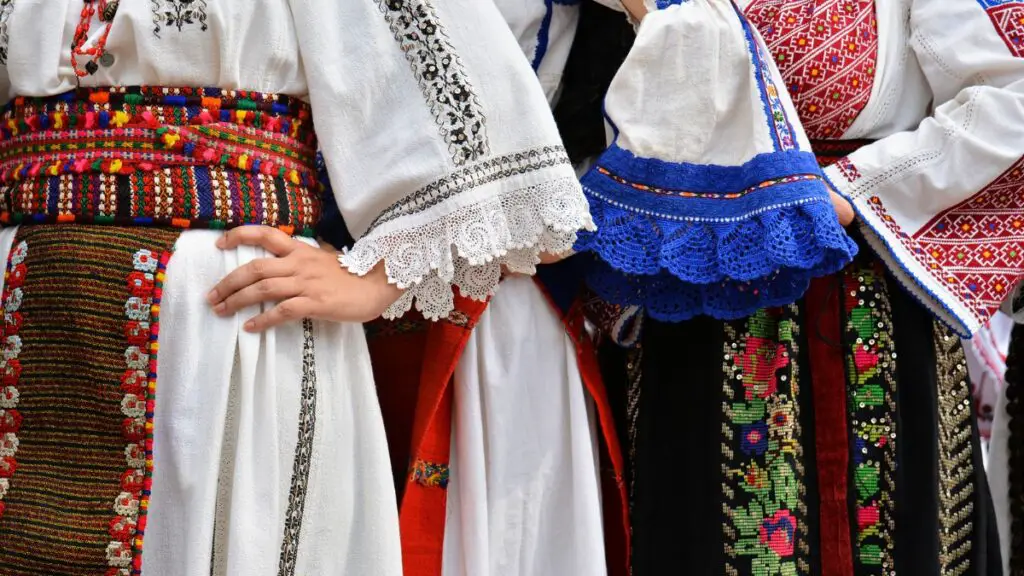This post may contain affiliate links. At no cost to you, purchases made through these links may result in a small commission for Traveling Transylvania. We never recommend products that we don’t know and trust. Thank you for your continued support!
At first glance, traditional Romanian clothing might strike you as a burst of vibrant colors, intricate embroidery, and unique designs. The attire is a fine blend of craftsmanship, regional influences, and historical elements. But these clothes are more than just a visual feast. They are symbols, each stitch telling a story of tradition, community, and identity that is rooted in the deep cultural soil of Romania.
Historically, traditional clothing in Romania served more than a practical purpose. It was a subtle language spoken through threads and patterns. An individual’s attire could tell tales about their marital status, wealth, and even their beliefs. The clothes were not merely worn; they were lived, with their significance intertwined with the everyday lives of the Romanian people.
From the bustling streets of Bucharest to the serene villages nestled in the Carpathian Mountains, you’ll find traces of these Romanian traditional clothes. The past permeates the present, creating a vivid tapestry of history worn proudly by the Romanian people.
So buckle up as we embark on a journey, an exploration into the heart of Romania. We’ll unravel the stories sewn into these garments, explore the craftsmanship that brings them to life, and understand how these traditional Romanian clothes continue to define and enrich the cultural landscape of Romania. From the historical evolution of these beautiful garments to their place in modern Romania, we’ll delve deep into a world where tradition meets fashion, heritage meets style, and history comes alive one stitch at a time.
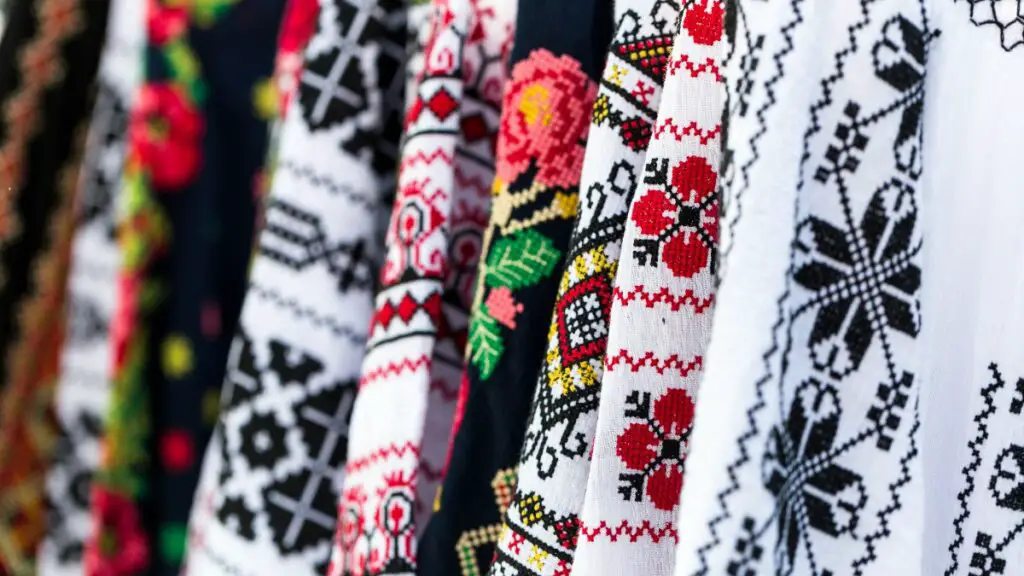
Historical Evolution of Romanian Traditional Clothes
The Medieval Roots
Our journey begins during the medieval times, when Romanian traditional clothes were deeply intertwined with everyday life. Peasants typically wore simple clothing made of wool or hemp, while the nobility sported finer garments, replete with fur and rich embroidery. Each piece was a reflection of the wearer’s social status, occupation, and even marital status.
Birth of ‘Port Popular’
As we step into the 18th and 19th centuries, the ‘port popular’, or ‘the people’s attire’, starts to take shape. The rural populace, known for their artistic flair, crafted clothing that came to embody the Romanian cultural identity. Utilizing locally available materials like wool, hemp, and flax, they created wearable art pieces through dyeing, weaving, and intricate embroidery.
Regional Diversity and Symbolism
Each region of Romania contributed unique elements to the clothing, particularly in terms of motifs and colors. Transylvania was known for its use of red and black, symbolizing life and death, while Moldova and Bucovina exhibited a colorful palette of blues, yellows, and reds derived from natural dyes.
Twentieth-Century Transformation
With the advent of the 20th century, societal changes and Western influences transformed Romanian traditional clothing. Practicality began to overshadow aesthetics, causing a decline in everyday use of traditional attire. Despite these shifts, traditional clothing continued to be a treasured part of significant life events, festivals, and national holidays.
Contemporary Resurgence
In the 21st century, we witness a renewed interest in traditional Romanian clothes. Their beauty and craftsmanship have attracted attention globally, influencing both local and international fashion designers. This has resulted in a fascinating integration of Romanian heritage into everything from high-fashion runways to trendy streetwear.
Echoes of Resilience
Through eras of change, traditional Romanian clothes have remained an unwavering symbol of cultural identity and pride. They represent stories of resilience, heritage, and tradition – narratives that continue to be celebrated and worn with pride today. In essence, these clothes are more than just a reflection of the past; they are a testament to the enduring spirit of Romania.
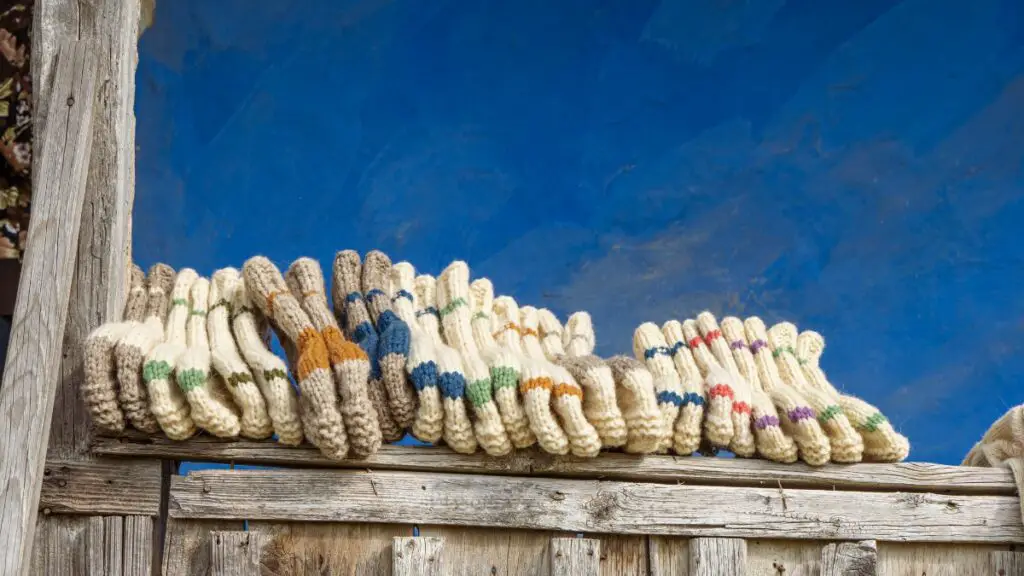
Elements of Traditional Romanian Clothes
The Colorful Tale of the ‘Ie’
When it comes to traditional Romanian clothing, the ‘ie’ is a staple that captures the heart of this culture. This blouse, which finds its roots in the ancient history of the region, is a labor of love, often taking weeks, if not months, to craft. Each ‘ie’ features a hand-stitched design, intricately arranged in a medley of patterns. It is typically woven with cotton or silk threads on a background of white linen, providing a stunning contrast.
The beauty of the ‘ie’ extends beyond its visual appeal, with each pattern narrating a tale from bygone eras. These could be stories of love, fertility, protection, or the natural world. Every symbol and color has its significance, showcasing the craftsmanship and cultural nuances of the Romanian people. Today, the ‘ie’ remains a beloved symbol of Romanian heritage, admired and worn with pride.
The Pride of the ‘Fotă’
Next in line is the ‘fotă’, a traditional wrap-around skirt. This rectangular piece of cloth, usually made of woven wool, is a vibrant component of a Romanian woman’s traditional attire. Wrapped around the waist and fastened with a belt, the ‘fotă’ showcases a distinctive design that changes from region to region.
The charm of the ‘fotă’ lies in the beadwork and embroidery that adorns it. Each design is meticulously created, featuring geometric patterns, floral motifs, or symbolic representations. These patterns, hand-stitched by the women of the household, serve as a testament to their artistic skill and patience. Like the ‘ie’, the ‘fotă’ is more than just a garment; it’s a piece of history worn with grace and dignity.
The Male Ensemble: ‘Bundă’ and ‘Opinci’
The artistry of traditional Romanian clothes is not restricted to women’s attire. Male clothing, although often understated, holds its unique charm and historical significance. The ‘bundă’, a traditional vest made of sheepskin or leather, is a key part of the ensemble. It is decorated with intricate patterns and often adorned with fur for added warmth during the cold Romanian winters.
Accompanying the ‘bundă’ are the ‘opinci’, traditional leather shoes. Made from a single piece of leather and fastened with a string, the ‘opinci’ are a testament to the practicality and resourcefulness of the Romanian people. Worn by both men and women, these shoes showcase the simplicity and functionality that characterize Romanian traditional attire.
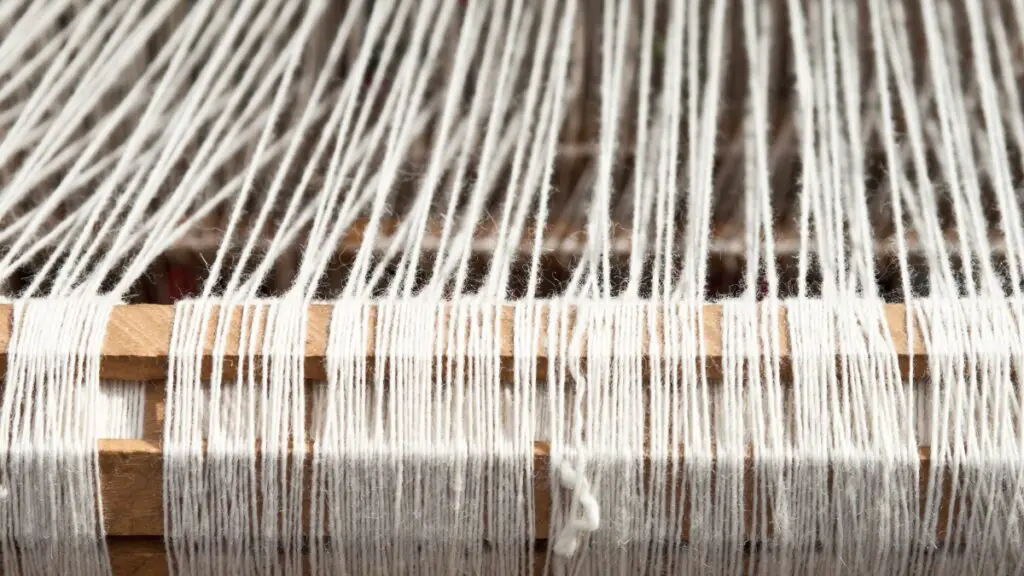
Materials and Techniques
The beauty and durability of traditional Romanian clothing come from the careful selection of materials and the skillful techniques employed in crafting each garment. From sourcing to dyeing, every step of the process reflects the patience, creativity, and resourcefulness of the Romanian people.
Raw Materials
Locally available raw materials played a significant role in the crafting of Romanian traditional clothes. Wool, hemp, and flax were the most commonly used materials. Wool, sourced from the abundant sheep population in the country, was used to create warm clothing suitable for the cold Romanian winters. Hemp and flax, on the other hand, were perfect for crafting lightweight and comfortable clothing for the summer months.
Spinning and Weaving
Once the raw materials were sourced, they were spun into threads. This was typically a communal activity, with women gathering to spin, chat, and share stories. The threads were then woven into cloth using traditional looms, a process requiring immense skill and patience. The end result was a durable, comfortable fabric, ready to be transformed into a piece of wearable art.
Dyeing
The next step in the process was dyeing. Natural dyes, extracted from plants, bark, and even certain types of soil, were used to add color to the fabric. For example, vibrant reds were derived from madder root, deep blues from the woad plant, and rich yellows from the bark of the apple tree. The process of dyeing was a delicate one, requiring the right balance of temperature and timing to ensure the color’s longevity.
Embroidery and Decoration
The dyed cloth was then ready for the final and most artistic step – embroidery. Intricate patterns were carefully sewn onto the fabric, each design unique and steeped in symbolism. The embroidery process could take weeks, even months, depending on the complexity of the design. In addition to embroidery, some garments were decorated with beads, sequins, or coins for an added touch of elegance.
Regional Variations
One of the fascinating aspects of traditional Romanian clothing is the diversity of designs and styles that vary from region to region. The geographical location, local customs, and environmental factors all contribute to these unique variations, making each regional style a distinctive representation of its people and culture.
Moldova and Bucovina
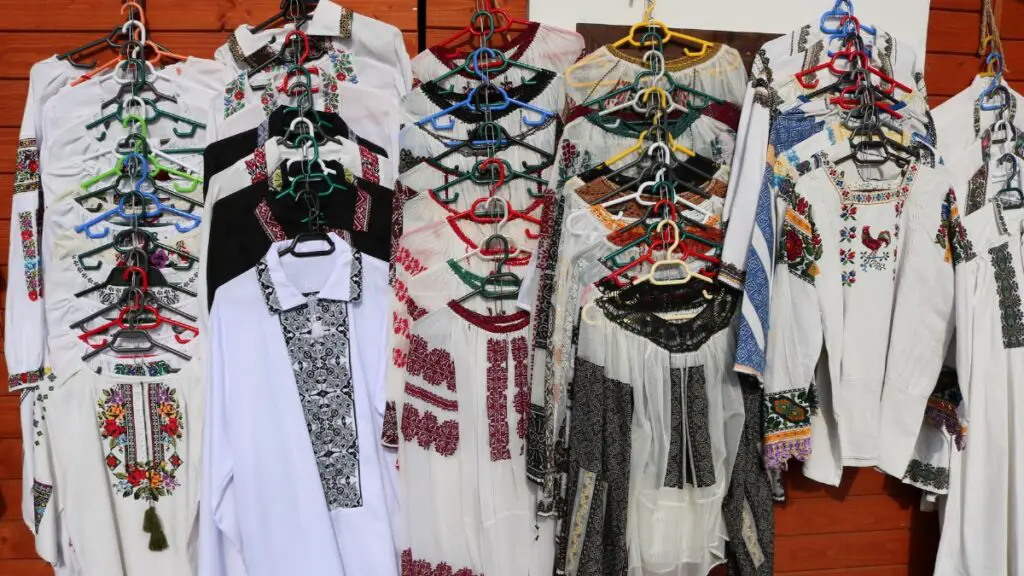
The traditional attire of Moldova and Bucovina is known for its colorful and intricate embroidery. The ‘ie’ or blouse typically showcases vibrant threads of blues, yellows, and reds that contrast beautifully against the white fabric. The patterns are often inspired by local flora, fauna, and geometric shapes, each with its symbolic meaning. The ‘fotă’, the wrap-around skirt, is equally radiant, complementing the vibrancy of the ‘ie’.
Transylvania
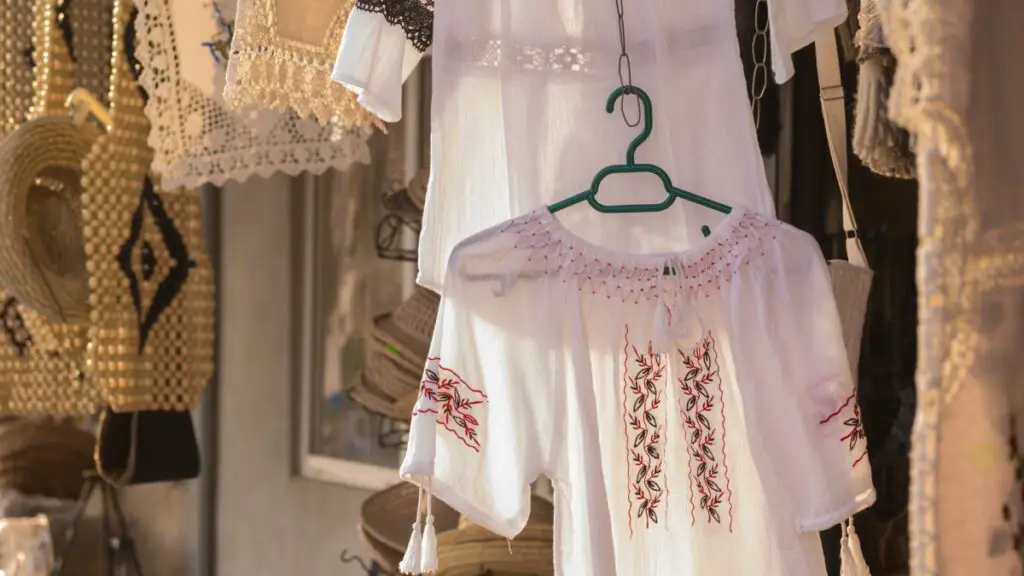
Transylvania, in contrast, is known for a more somber color palette. Blacks, whites, and deep reds dominate the clothing, representing life, purity, and death. The Transylvanian ‘ie’ often features black or red embroidery against a white background, while the men’s attire is usually dark, accessorized with hats and leather belts.
Muntenia and Oltenia
In Muntenia and Oltenia, the traditional clothing is known for its lavish use of beads and sequins. These regions also stand out for their use of ‘altiță’, a type of beaded collar worn by women. The ‘fotă’ from these regions is usually short and made from a rich, colorful fabric, often adorned with rows of intricate beadwork.
Maramureș
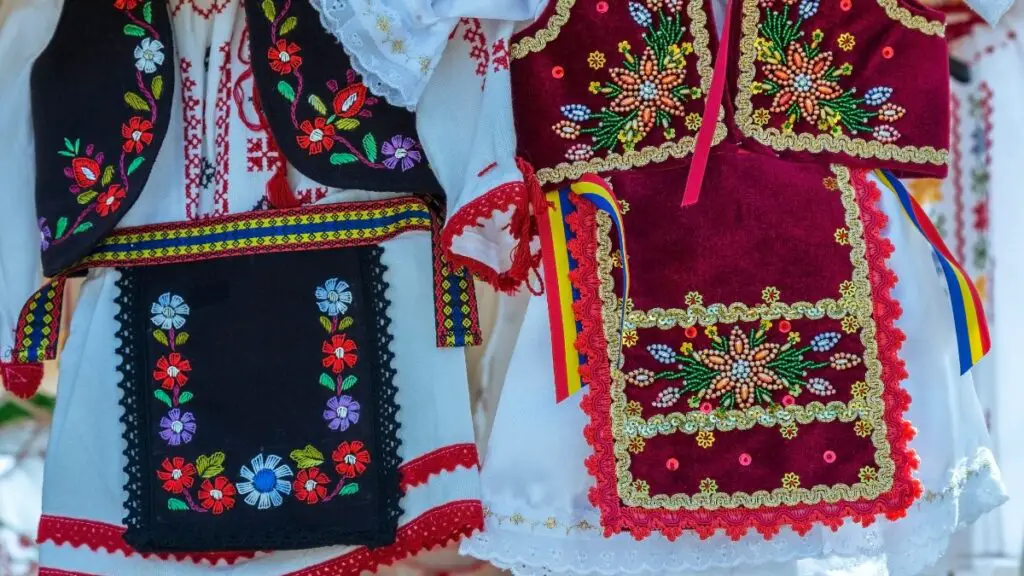
Maramureș, located in northern Romania, is renowned for its unique hats, known as ‘clop’, and wide-sleeved ‘ie’. The ‘clop’ is usually made of straw and decorated with beads and colored threads. The ‘ie’, on the other hand, has wide sleeves and is adorned with geometric patterns, symbolizing the area’s rural traditions and connections with nature.
The Cultural Significance of Traditional Romanian Clothes
Each thread, each stitch, and each pattern in traditional Romanian clothes carries a story, a piece of history that resonates with cultural significance. As we admire the beauty of these garments, we are reminded of the resilience, creativity, and spirit of the Romanian people, whose heritage continues to inspire and captivate the world.
Clothing as a Cultural Identifier
Every element of traditional Romanian clothing, from the vibrant colors to the intricate designs, serves as a visual expression of Romanian culture. They reveal insights into the social hierarchy, economic status, marital status, and regional origin of the wearer. Thus, these clothes act as a ‘cultural identifier’, setting apart Romanians from their neighboring cultures.
Spiritual and Symbolic Representations
Romanian traditional clothes are not just aesthetically pleasing; they are also filled with symbolism and spiritual significance. Colors, patterns, and embroidery designs often represent natural elements, life events, and ancient Romanian myths and legends. These clothes thus served as a medium to express spirituality and a connection to nature and the divine.
Traditional Clothing in Celebrations and Festivals
During celebrations and festivals, traditional clothing plays a significant role in Romania. It’s during these occasions that Romanians adorn themselves in their most elaborate traditional attire. From weddings to religious holidays, the sight of Romanians wearing traditional clothes adds to the vibrancy and grandeur of the festivities.
Preservation of Artisan Skills and Heritage
The creation of traditional Romanian clothing requires a diverse set of skills, including weaving, dyeing, and embroidery. By continuing to make and wear these clothes, Romanians preserve these artisan skills, ensuring they are passed down through generations. This not only keeps their heritage alive but also contributes to the cultural diversity and richness of the world.
Modern Interpretations and Global Influence
In recent years, elements of traditional Romanian clothing have found their way into modern fashion. Designers, both within Romania and internationally, have drawn inspiration from these traditional designs, introducing them to a wider audience. This fusion of tradition and modernity not only elevates Romanian culture on the global stage but also highlights the timeless appeal of these traditional clothes.
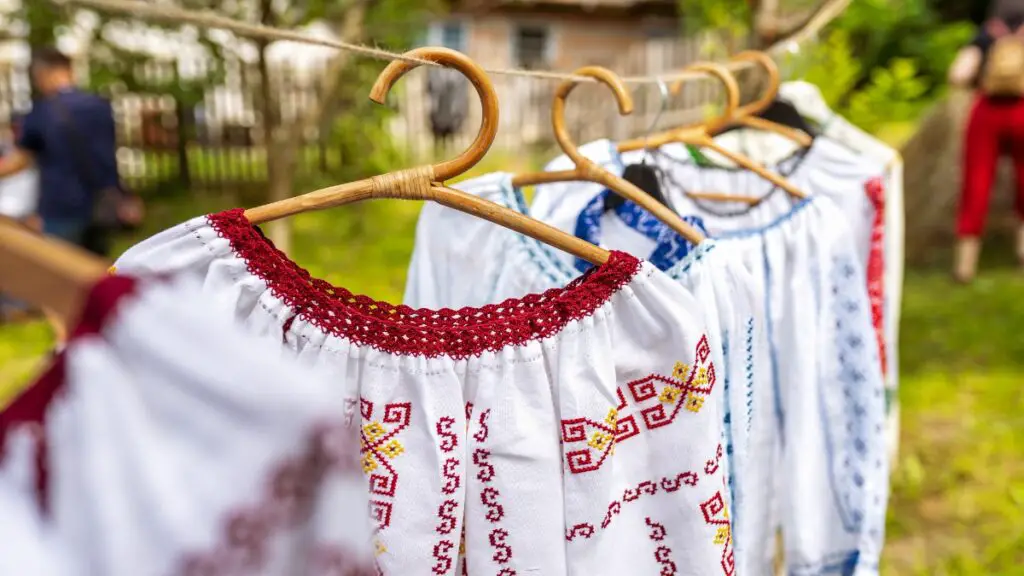
The Timeless Charm of Traditional Romanian Clothing
These clothes stand as a testament to the Romanian people’s cultural pride and identity. They exemplify the love for their roots, their appreciation for art and nature, and their respect for the wisdom of their ancestors.
Looking ahead, the global resurgence of traditional Romanian attire inspires a future where tradition and modernity coexist. It encourages us to preserve our cultural heritage while adapting to the changing world.
In the end, traditional Romanian clothing is more than just attire; it’s a celebration of a nation’s spirit, artistry, and resilience. As we appreciate the beauty of each garment, we are reminded of the stories, values, and craftsmanship they represent. They inspire us to honor our past, celebrate our present, and look forward to a future where traditions continue to thrive and inspire.
The exploration into the world of traditional Romanian clothes is indeed a fascinating journey, one that leaves us with a deeper understanding and appreciation of Romanian culture. As we sign off, we hope this article inspires you to explore further, to learn more, and to embrace the rich tapestry of traditions that make up our global community.

